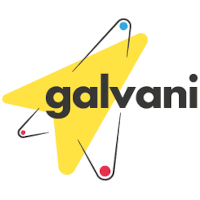
24 Feb PostDoc/PhD – Interictal and Ictal Markers of the Epileptogenic Zone
Context
The GALVANI project (https://www.galvani-lab.eu/) is a European research project (ERC SYNERGY 2020) aiming at developing non-invasive brain transcranial current stimulation (tCS) in epilepsy. Cumulated prevalence of epilepsy is 3% and about one-third of patients are drug resistant. This situation leads to major handicaps and comorbidities. In focal DRE, epilepsy surgery may be indicated if a focal resection is possible, a decision often taken after invasive EEG recordings (Stereo-EEG, SEEG). However, epilepsy surgery is possible in only 20% of DRE patients and is facing a certain number of failures. In this context, tCS is a promising tool in patients with drug resistant epilepsy (DRE). Still, it is not yet indicated as a standard treatment due to major scientific limitations: unknown mechanisms of action, insufficient account for patient-specific factors, poor understanding of short- and long-term effects. The ambition of the GALVANI project is to transform the care of a large fraction of patients living with drug-resistant epilepsies by solving a fundamental problem: to efficiently target and control large-scale epileptic brain networks with tCS-induced neuromodulatory weak electric fields.
Scientific Environment
GALVANI involves three partners: LTSI-Inserm (Rennes), AMU-APHP (Marseille) and Neuroelectrics (Barcelona). It is intended to develop the next generation of brain stimulation solutions. GALVANI can be viewed as a distributed lab (Rennes-Barcelona-Marseille) working under a common policy to ensure coherence of research and intense collaboration and cross-fertilization. Fellows will be co-supervised in a unique, shared environment with exposure to science, technology and clinical experience
Within the GALVANI project, the Marseille team is specialized in the management of epilepsy at Timone Hospital in the Epileptology and Cerebral Rhythmology department (Head Prof. F Bartolomei) with a strong expertise in SEEG explorations. The hospital department houses a research team from the Institut de Neurosciences des Systèmes (INS, INSERM AMU 1106, DYNAMAP team, dir C. Benar, https://ins-amu.fr/dynamap) specialized in the analysis of electrophysiological signals (SEEG, MEG, EEG).
We are looking for several candidates (PhD or Postdocs) that can complement and extend the DYNAMAP team’s expertise in the GALVANI Research project.
Contacts:
Christian Bénar (christian.benar@univ-amu.fr)
Fabrice Bartolomei (Fabrice.Bartolomei@ap-hm.fr)
Position 1: Post-doc/PhD “Interictal and Ictal Markers of the epileptogenic zone” (3y)
Planned recruitment: March 2020 (3y)
Rationale:
Epilepsy is a disease of brain networks. It is increasingly recognized that investigation of pathological networks helps delineating the epileptogenic zone, i.e. the brain regions that need to be removed in order to abolish epileptic seizures. This is to be contrasted with the propagation zone, i.e regions involved secondarily within the ictal discharges. The best methods for defining the network, as well as the type of activity (background, epileptic spikes, oscillations) remain to be defined. Within the Galvani project, network characterization will permit defining which nodes of the models are epileptic, as well a quantifying the impact of stimulation on pathological activity.
Objectives:
Perform local and network measures based either on raw interictal signals or on event detections, and define which combination of measures best predict the epileptogenic zone.
Methods:
Constitute an SEEG database with interictal measures, ictal activity, visual onset zone; surgery results. Define and compute epileptogenicity biomarkers: connectivity patterns, co- occurrence of detected events, time-frequency analysis of ictal signals. Evaluate markers by testing them versus the EZ defined visually or automatically.
Required skills:
Electrophysiology, epilepsy, signal processing, programming in Matlab or Python. Good capacities to work in a team.
Please click here to learn more.


Sorry, the comment form is closed at this time.